Lavender is by far my very favorite scent. I love it fresh when the plants are in bloom, as it dries around the garden, in sachets tucked into my pillow at night, or as bath salts when I soak away the aches of the gardening day. This magical herb is said to promote relaxation, relieve stress, and even soothe an achy head. Oh and the bees and butterflies love it. We can’t forget the pollinators.
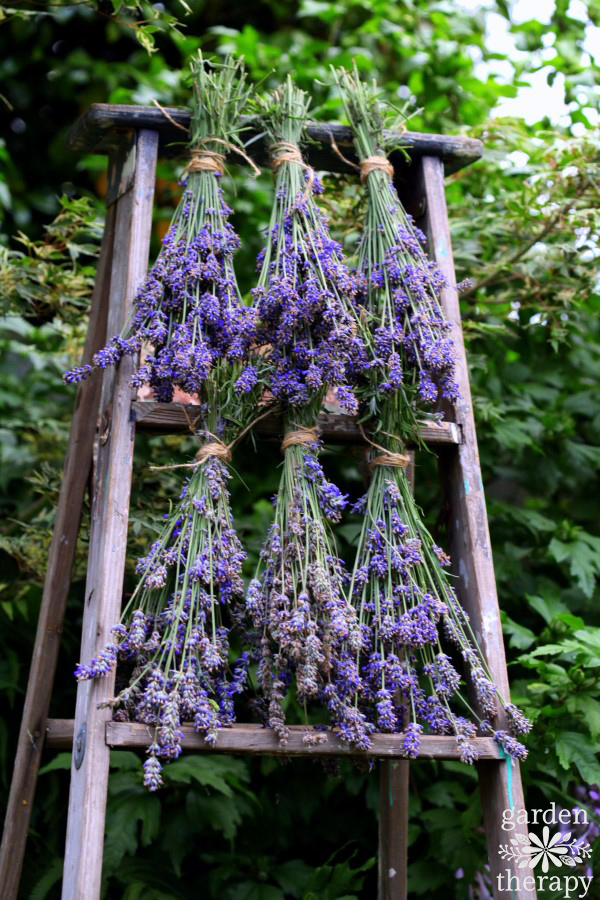
Harvesting lavender is a great way to tidy up unruly plants and will give you a whole bunch of inspiration for projects throughout the year. There is a proper way and ideal time to harvest lavender that is best for both the dried flowers and the plants.
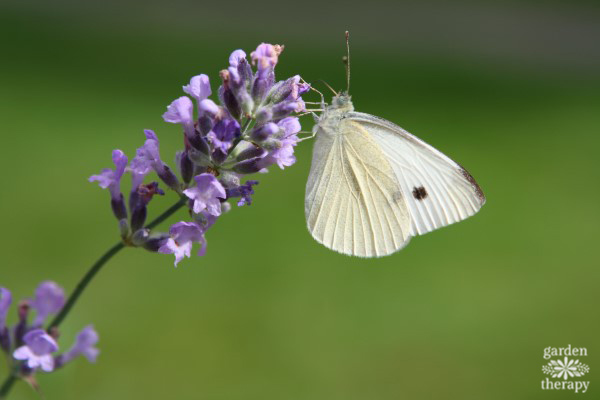
Lavender is commonly grouped into English lavender (Lavandula angustifolia) with its delicate flowers and long stems that soar above the woody evergreen plant, and Spanish lavender (Lavandula stoechas) with its showy hat of bracts on a perennial shrub. I grow a few ornamental Spanish lavender plants but for year-round crafting and culinary use, it’s English all the way.
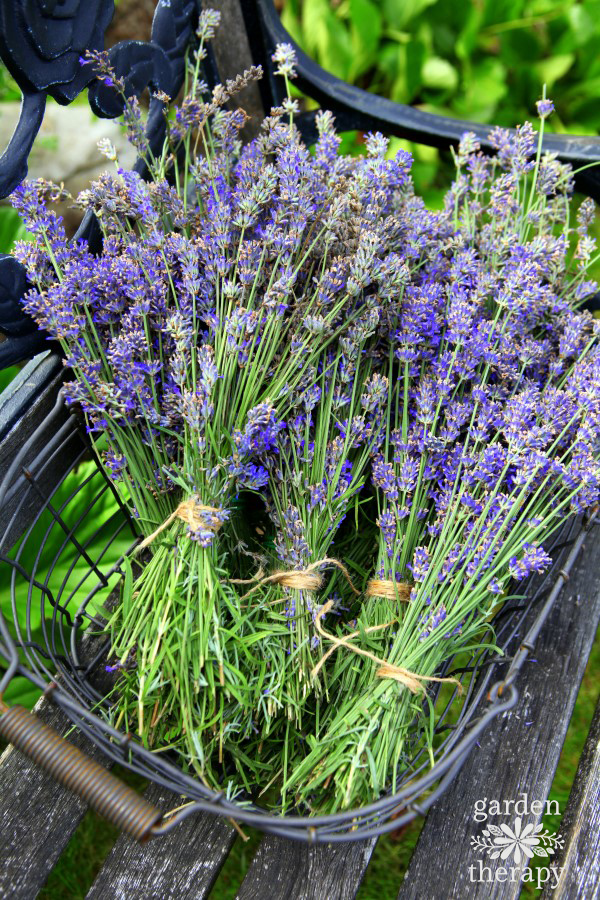
The best time to harvest English lavender is when the buds have formed on the plant but the flowers have not yet opened. Lavender harvested at this time of year will fall off the stems more easily when dry, making it easier to collect. closed buds will also retain fragrance and color longer. The cultivar of your lavender will also determine fragrance, color, and longevity of the dried stems as well. Hidcote and Munstead English lavender varieties are noted by many to be the best for drying (L. angustifolia ‘Hidcote’ and L. angustifolia ‘Munstead’).
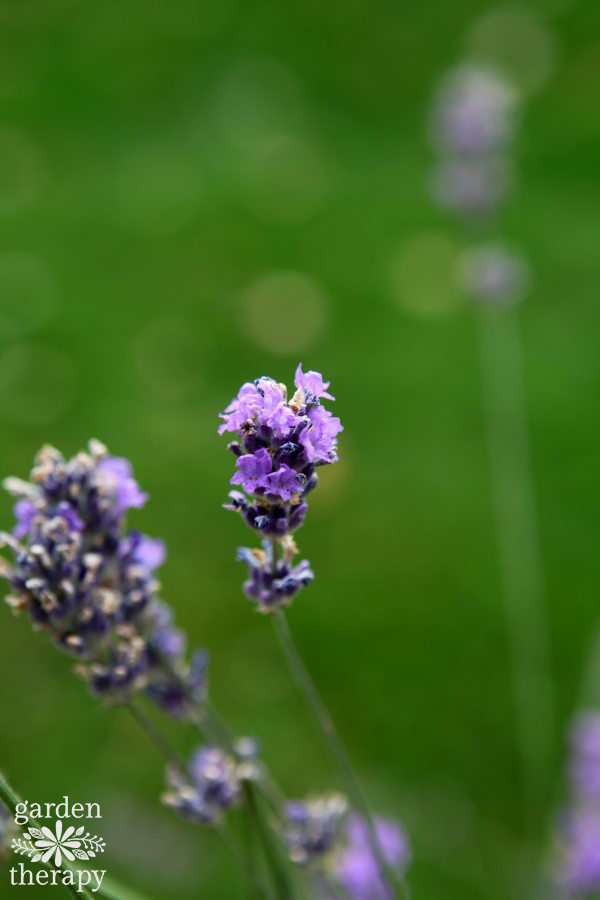
To harvest, use sharp bypass pruners and gather a small handful of long flower stems. Be sure that you are leaving behind at least two sets of leaves on the green part of the stem. If you cut all the way back to the woody part of the stem, that stem will not regrow. I like to be generous and leave at least 3-4 sets of leaves on the plant, then go back and prune it to two sets of leaves on the green stem. This ensures that I’m not damaging the plant that gives me all these beautiful flowers! Continue collecting stems in your hand until you have a nice sized bundle. Secure the bundle with twine and continue until the plant is fully harvested.
Pruning the plants like this will keep the shrub tidy and evergreen through some colder climates. If your plants are leggy and you see lots of dead wood, it’s a good idea to summer prune them each year until they regain a tidier shape. You can safely prune back your lavender plants twice in the growing season to help define and maintain their shape.
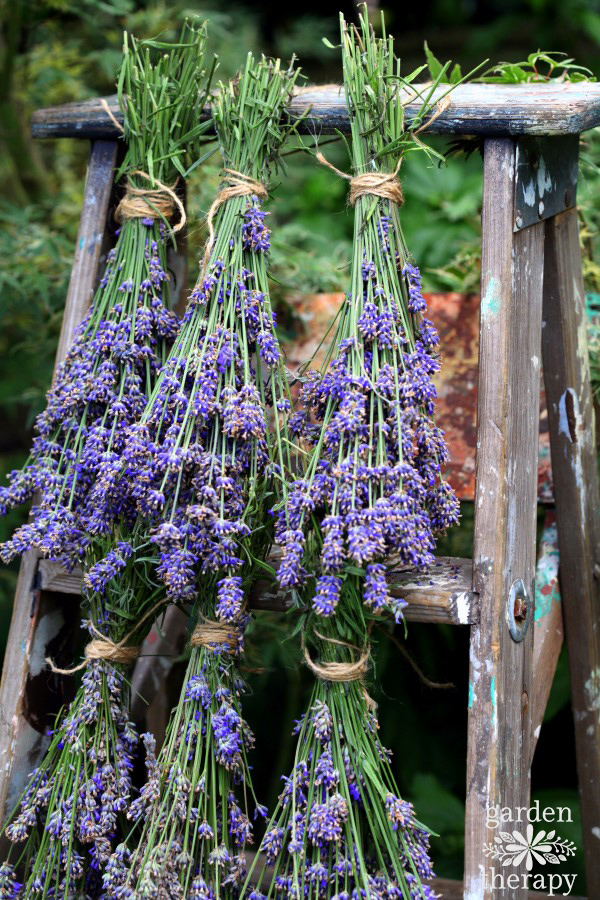
Dry the bunches by hanging them in a warm, dry spot, out of direct sunlight. Under eaves, in the garage, or somewhere in the garden that is protected is ideal. My herb dryer is an old painting ladder outfitted with some hooks for the twine. But I have also dried lavender along a shady fence and made it into a dried lavender wreath. Adding some drying lavender around your home will make it smell heavenly. I highly recommend it.
After 2-4 weeks when the lavender has fully dried, you can shake or gently rub the flower buds into a tray or bowl. Store lavender in a lidded jar in a cool dark place and repeat next year.
In case you are wondering what to do with your bounty of fresh herbs, check out these DIY projects and recipes featuring this star of the garden.
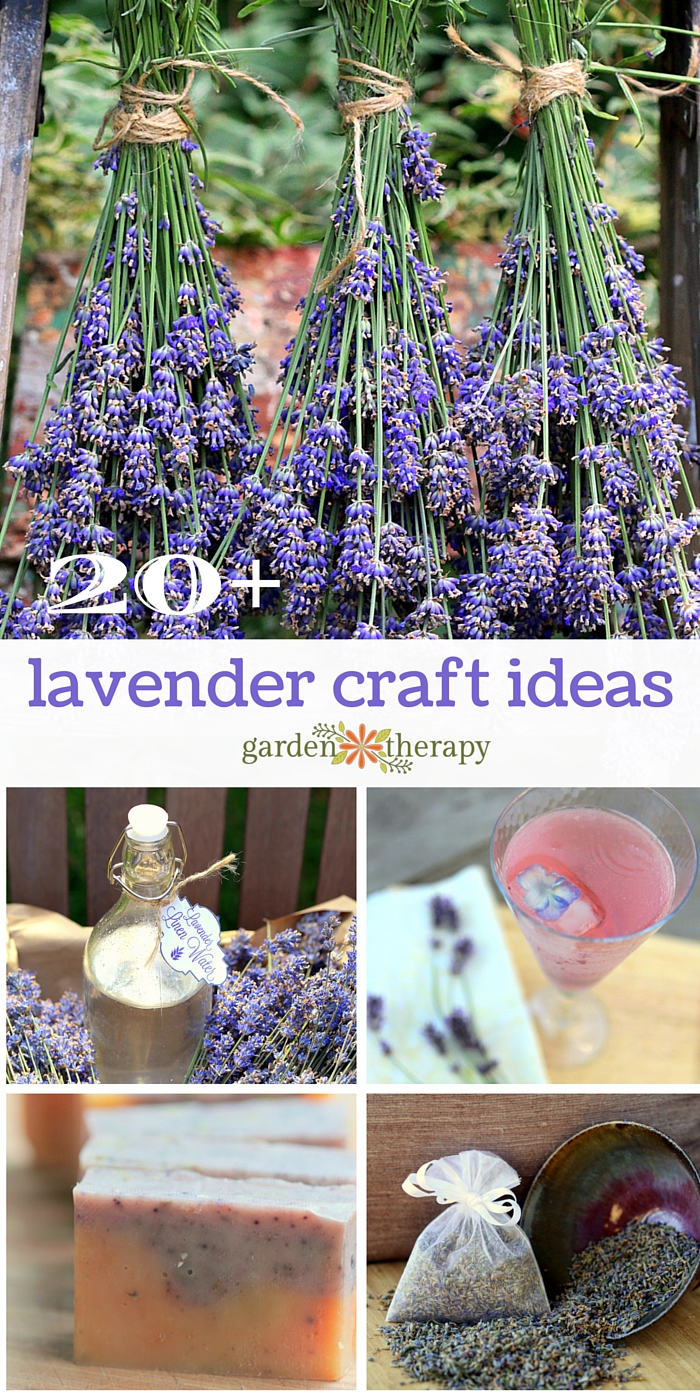
Original article and pictures take gardentherapy.ca site
Комментариев нет:
Отправить комментарий